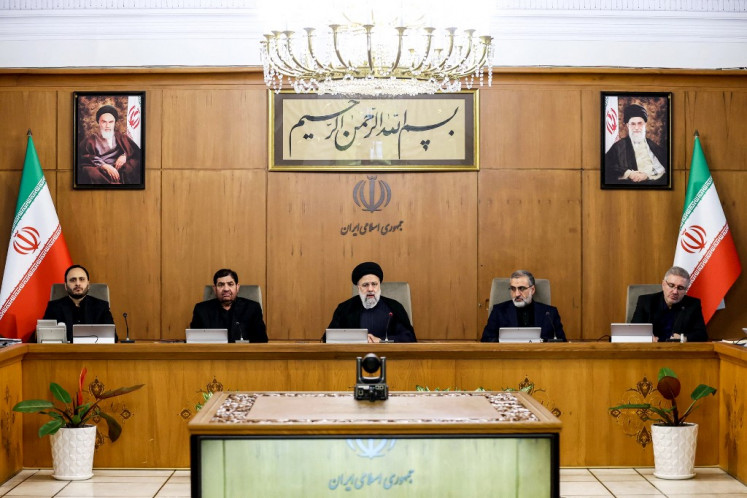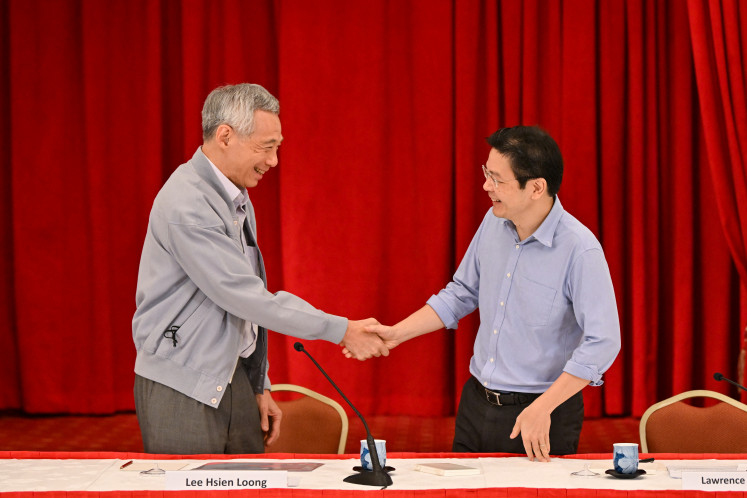Indonesia: Opportunity hiding in plain sight
Indonesia is on track to become Asia’s next US$1 trillion economy
Change Size

I
ndonesia is on track to become Asia’s next US$1 trillion economy. Yet it’s largely overlooked by most Australian businesses. Why are we ignoring the opportunity on our doorstep?
Since the Asian financial crisis left the economy in ruins in the late 1990s, Indonesia’s economic performance has been impressive. Gross domestic product (GDP) growth is among the highest of the large emerging markets, consistently over 5 percent, with only a slight fall during the global financial crisis.
Already the world’s eighth largest economy in purchasing power parity terms, Indonesia is expected to rise to the fifth place by 2030 and fourth by 2050 according to PwC’s World in 2050 report.
Incredibly Indonesia isn’t one of our top 10 trading partners. Australian direct investment in Indonesia stands at just A$6.2 billion ($4,7 billion), less than half our investment in Papua New Guinea and barely 1 percent of our total stock of outward direct investment.
Part of the problem may be due to some profound misunderstandings about one of our nearest neighbors. For example, this year’s Lowy Poll found that just 27 percent of Australians agree that “Indonesia is a democracy”.
This is a worrisome finding. The 2014 presidential election was Indonesia’s third since Suharto stepped down almost two decades ago. It was also the largest single day of voting anywhere in the world, with over 130 million people exercising their democratic rights in a tightly fought contest.
Australian companies need to start paying greater attention to Indonesia. They need to understand what’s driving the country’s economic growth, what the opportunities are and what they need to do to capitalize.
Among the many economic drivers, infrastructure spending is one that’s been getting most of the attention.
During his 2014 election campaign, President Joko “Jokowi” Widodo made two closely related promises: Deliver economic growth of 7 percent through his five-year term and implement a US$550 billion infrastructure plan.
The infrastructure plan is not just about stimulating spending, but also enabling the economy-wide productivity gains necessary to push growth toward the President’s ambitious target.
Connectivity is one of the focus areas for investment. Increased spending on roads, ports, rail and air is improving the flow of goods and services in, out and around the archipelago, while improvements in telecommunications infrastructure are expanding digital connectivity.
There are also plans to almost double Indonesia’s electricity generation capacity — adding 35,000 MW of generation capacity in five years, about equivalent to Australia’s east coast installed base.
The story of economic growth in Indonesia has been one of consumption which makes up 55 percent of GDP.
Not only is the country’s 250 million strong population growing, it’s becoming better educated, more urban and more employed. With an average age of 29 years, they are also young. An emerging and affluent middle class is expected grow to 140 million by the end of the decade.
Indonesians are now more digitally connected than ever before and are among the world’s highest users of social media. Today, Indonesia is the fastest growing internet market in the world. Online spending is expected to reach $46 billion in 2025.
Now just past the halfway mark of his first term, President Jokowi is continuing to deliver on his promise to drive reforms aimed at stimulating growth, removing red tape and encouraging foreign investment.
Early on, President Jokowi took the bold step of removing expensive energy subsidies, worth around $20 billion or 15-20 percent of the budget, to free up much-needed finance for infrastructure investment.
But the reform process has not been all plain sailing. The President is still pushing up against powerful protectionist and nationalist forces that come and go in Indonesian politics. And building institutional strength and capability in the bureaucracy will take time.
The Asian Development Bank has estimated that Indonesia needs $1.6 trillion of investment to meet its needs to 2030. Current investment is running at around one-third of what is actually needed acting as a drag on growth.
And despite rising employment and wages and eight interest rate cuts since the beginning of 2016, Indonesia’s middle-class and high income earners have been putting their money in the bank rather than spending it.
Lower than expected consumption and flat prices for key export commodities — coal and palm oil — have the government worried about growth and in July they revised the 2017 budget outlook with an increase in spending but a cut in the revenue target.
The revisions will create a fiscal deficit of 2.92 percent of GDP, just below the 3 percent legal ceiling.
Local institutions simply don’t have the capacity to fund the infrastructure needed to support Indonesia’s growth aspirations. And with no room to move in the government budget protectionism will need to be balanced with pragmatism.
Indonesia needs foreign investment — and quite a lot of it — to reach its economic potential.
As incomes in Indonesia rise, so too is the demand for the goods and services that Australia does well: education, healthcare, financial and professional services, tourism, technology, food and agriculture. And as its industries mature, Indonesia will require new and advanced trade skills, a potentially untapped part of Australia’s education export sector. There’s also a significant opportunity for Australian businesses and institutions to play a role in the country’s multi-billion dollar infrastructure plan.
The Australian and Indonesian governments are currently working toward a Comprehensive Economic Partnership Agreement aimed at helping to bring these opportunities to fruition. Like any trade deal though, governments can open the door — but business will have to walk through it.
And it will not necessarily be easy. Australia is way behind the game compared to other Asian investors including China, Japan and South Korea, all of which have been much quicker to invest.
Indonesia has its challenges, ranking 72nd on the World Bank Ease of Doing Business index — although a significant improvement from 117th four years ago. Corruption issues and the tussle between Jakarta and provincial authorities makes for a complex environment for business to navigate.
Business leaders we speak to who have invested in the region argue that despite its challenges, once they get experience in Indonesia it’s one of the most productive and profitable countries that they work in.
So, will Australian business rise to the challenge and be part of Indonesia’s rise as an economic power? Or will we stay put and watch the Asia opportunity — yet again — pass us by?
__________________________
The writer is a partner at PwC Australia and leader of the firm’s Asia practice. Director of Australia Indonesia Center at Monash University. The views are his own.









